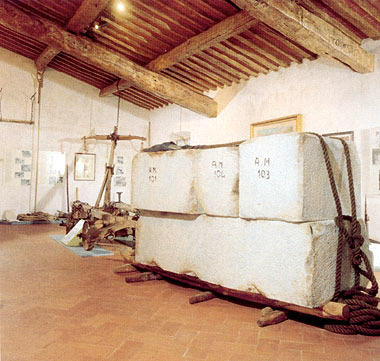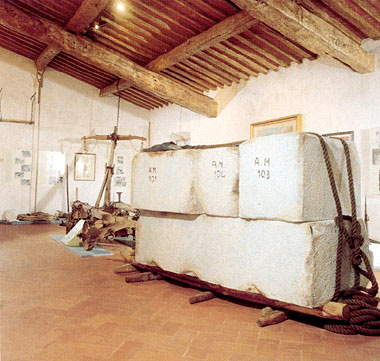The marble routes
N° 2 Stops

Information
Recommended season:
All the seasons


Marble has been used since ancient times and it is connected in particular with Monte Altissimo near Seravezza where Michelangelo Buonarroti chose the stone for the façade of San Lorenzo in Florence. Since then the Medici family has played a leading role in promoting the Versilian mountains as a marble source starting a long tradition of transport towards the coast along the so called "via di marina": ready hewn blocks were loaded upon ox driven carts and later lifted on board the ships with the help of what was known as "mancina", something like today's crane. The exploitation of the marble quarries and the consequent development of a solid artistic tradition made the territory of Versilia a land of sculptors and artists.
Alpi Apuane
- AZZARI M., Le ferriere preindustriali delle Apuane: siderurgia e organizzazione del territorio nella Versilia interna, Firenze 1990
- GIORGETTI C., Gli albori della industria marmifera in Garfagnana: testo ampliato d'una relazione tenuta a Carfaniana antiqua, Minacciano 1980
The town of Pietrasanta is a good starting point for a journey through the most representative places of a culture closely connected to the quarrying and artistic production of Versilian marble. Besides a visit to the artisans' workshops in the historic town centre that carry on the tradition of sculpture, you can also see the Museo dei Bozzetti (opened in 1984 in order to create a collection of the most significant plaster models and sketches prepared by sculptors in Versilian workshops); the collection is growing continuously and contains works created between the beginning of the twentieth century until today by artists from all over the world. The famous resort of Forte dei Marmi, not far from Pietrasanta, also deserves to be mentioned: it owes its name to the marble warehouses along the coast where the stone was kept before being loaded aboard ships.
In the village of Querceta there are many artistic workshops that produce marble objects for an international clientele. From Querceta you can easily reach the white marble quarries in the Apuan Alps, among them the renowned ones of Monte Altissimo and Monte Corchia. Not far away, in Seravezza, you shouldn't miss the "Museo del Lavoro e delle Tradizioni Popolari della Versilia Storica" that occupies the Palazzo Mediceo with an interesting exhibition of old marble articles. In Pomezzana, a small village belonging to the Municipality of Stazzema, the old Milani ironworks are open to visitors: here different tools necessary for marble workers in quarries and workshops are still forged.
You may also like..
See allFind more
0







 By car
By car







